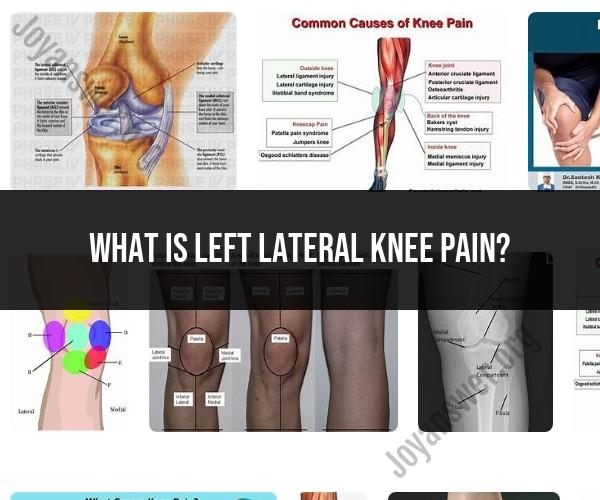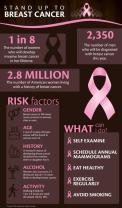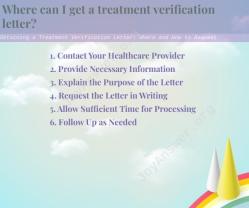What is left lateral knee pain?
Left lateral knee pain refers to pain or discomfort experienced on the outer side (lateral side) of the left knee joint. This type of knee pain can have various causes, and it may be associated with different symptoms and conditions. Some common causes and conditions that can lead to left lateral knee pain include:
Iliotibial Band Syndrome (ITBS): ITBS is a common overuse injury that affects runners and cyclists. It occurs when the iliotibial band, a thick band of tissue that runs along the outer side of the thigh and inserts into the knee, becomes irritated and inflamed. This can result in lateral knee pain.
Lateral Collateral Ligament (LCL) Injury: The LCL is one of the four major ligaments that stabilize the knee joint. Injury or sprain to the LCL, often due to a traumatic event like a direct blow to the inner knee, can cause lateral knee pain.
Meniscus Tear: Tears in the lateral meniscus, one of the two wedge-shaped cartilage discs in the knee, can lead to pain on the outer side of the knee. Meniscus injuries often result from twisting or traumatic movements.
Iliotibial Band Friction Syndrome: This condition occurs when the iliotibial band rubs against the lateral femoral condyle (the bottom end of the thigh bone) during knee flexion and extension. It can cause pain and discomfort on the lateral side of the knee.
Bursitis: Bursae are small, fluid-filled sacs that cushion and reduce friction between tendons, muscles, and bones. Inflammation of the bursa on the outer side of the knee can lead to lateral knee pain.
Overuse or Tendonitis: Repeated use or overuse of the knee joint can lead to tendonitis, including iliotibial band tendonitis or lateral patellar tendonitis, causing pain on the outer knee.
Arthritis: Conditions like osteoarthritis or inflammatory arthritis can affect any part of the knee joint, including the lateral side, leading to chronic pain and inflammation.
Trauma or Injury: Direct blows, falls, or accidents can cause injuries to the lateral aspect of the knee, including fractures, contusions, or dislocations, resulting in pain.
Nerve Compression or Entrapment: Sometimes, nerve compression or entrapment, such as peroneal nerve entrapment, can cause pain that radiates to the lateral knee.
Management of left lateral knee pain depends on its underlying cause. Treatment options may include:
- Rest, ice, compression, and elevation (RICE) for acute injuries.
- Physical therapy to strengthen muscles and improve knee stability.
- Medications for pain and inflammation.
- Corticosteroid injections for bursitis or inflammatory conditions.
- Bracing or taping to provide support.
- Activity modification or lifestyle changes to reduce overuse.
- Surgical interventions, such as meniscus repair or ligament reconstruction, for severe injuries.
It's essential to consult a healthcare professional, such as an orthopedic specialist or physical therapist, to diagnose the specific cause of left lateral knee pain and develop an appropriate treatment plan tailored to your condition.
Left Lateral Knee Pain: Causes, Diagnosis, and Treatment
Left lateral knee pain is pain that occurs on the outside of the left knee. It is a common condition that can be caused by a variety of factors, including:
- Iliotibial band syndrome (ITBS): ITBS is an overuse injury that is most common in runners and other athletes. It is caused by inflammation of the iliotibial band, a thick band of tissue that runs along the outside of the thigh and attaches to the knee.
- Lateral meniscus tear: The meniscus is a piece of cartilage that acts as a cushion between the bones of the knee joint. A tear in the meniscus can cause pain, swelling, and locking of the knee.
- Patellofemoral pain syndrome (PFPS): PFPS is a common cause of knee pain in adolescents and young adults. It is caused by inflammation of the cartilage under the kneecap.
- Lateral collateral ligament (LCL) tear: The LCL is a ligament that helps to stabilize the outside of the knee joint. A tear in the LCL can cause pain and instability of the knee.
- Osteoarthritis: Osteoarthritis is a type of arthritis that causes the cartilage in the knee joint to break down over time. This can lead to pain, stiffness, and swelling of the knee.
To diagnose the cause of left lateral knee pain, your doctor will perform a physical examination and ask you about your medical history and symptoms. They may also order imaging tests, such as X-rays or MRI scans.
Treatment for left lateral knee pain will vary depending on the underlying cause. However, common treatments include:
- Rest: Resting the knee can help to reduce inflammation and pain.
- Ice: Applying ice to the knee for 20 minutes at a time, several times a day, can also help to reduce inflammation and pain.
- Compression: Wearing a compression bandage or sleeve can help to support the knee and reduce swelling.
- Elevation: Elevating the knee above the level of the heart when resting can also help to reduce swelling.
- Over-the-counter pain relievers: Over-the-counter pain relievers, such as ibuprofen or acetaminophen, can help to reduce pain and inflammation.
- Physical therapy: Physical therapy can help to strengthen the muscles around the knee and improve range of motion.
- Corticosteroids: Corticosteroids are injections that can help to reduce inflammation and pain.
- Surgery: Surgery may be recommended in severe cases, such as with a torn meniscus or LCL.
Understanding and Managing Left Lateral Knee Discomfort
Left lateral knee discomfort is a common problem that can affect people of all ages. It can be caused by a variety of factors, including overuse injuries, trauma, and degenerative conditions.
If you are experiencing left lateral knee discomfort, it is important to see a doctor to determine the underlying cause and get the appropriate treatment. In the meantime, there are some things you can do to manage your pain and discomfort, such as:
- Resting your knee: This is one of the most important things you can do to reduce inflammation and pain.
- Applying ice: Ice can help to numb the pain and reduce inflammation.
- Taking over-the-counter pain relievers: Over-the-counter pain relievers, such as ibuprofen or acetaminophen, can help to reduce pain and inflammation.
- Wearing a compression bandage or sleeve: This can help to support the knee and reduce swelling.
- Elevating your knee: This can also help to reduce swelling.
If you are an athlete, it is important to modify your activities to avoid aggravating your knee pain. You should also warm up properly before exercising and cool down afterwards.
Keeping Your Knees Healthy: Tips for Preventing Lateral Knee Pain
There are a number of things you can do to help prevent lateral knee pain, including:
- Maintaining a healthy weight: Excess weight puts extra stress on your knees.
- Strengthening the muscles around your knees: Strong muscles can help to support your knees and reduce your risk of injury.
- Wearing supportive shoes: Supportive shoes can help to reduce the stress on your knees.
- Avoiding overuse: If you are involved in activities that put a lot of stress on your knees, such as running or jumping, be sure to take breaks to rest your knees.
- Warming up before exercising: Warming up helps to prepare your body for activity and reduce your risk of injury.
- Cooling down after exercising: Cooling down helps your body to recover from activity and reduce your risk of injury.
If you experience any knee pain, it is important to see a doctor to determine the underlying cause and get the appropriate treatment.













